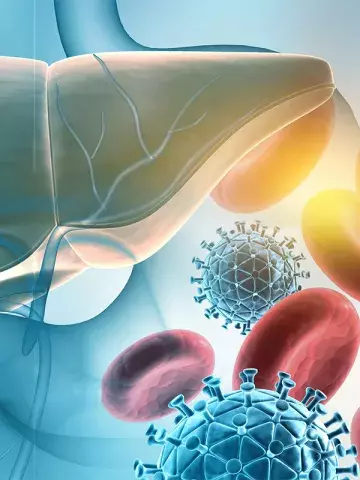Declining risk of hepatitis B and C liver-related morbidity and mortality
By Melanie Hinze
New research, published in The Lancet Regional Health – Western Pacific, provides evidence of a declining risk of hepatitis B virus (HBV) and hepatitis C virus (HCV) liver-related morbidity and mortality in Australia, in response to efforts to reach elimination targets.
The researchers linked HBV and HCV notifications in New South Wales (NSW) from 1995 to 2022 to hospital and mortality records. They evaluated temporal trends in decompensated cirrhosis (DC), hepatocellular carcinoma (HCC) and mortality among people notified for HBV and HCV.
In total 64,865 people with an HBV notification and 112,277 with an HCV notification were identified in NSW. Significant reductions in age-adjusted HBV- and HCV-related DC, HCC and liver-related mortality were seen between 2002 and 2022.
The age-standardised incidence of HCC among those with HBV reduced from 3.08 per 1000 person-years in 2002, to 1.47 in 2015 and 1.16 in 2022. The incidence of liver-related mortality in this group in the same years reduced from 2.84 to 1.93, and then 1.40 in 2022.
Among those with HCV, the age-standardised incidence of DC per 1000 person years was 5.53 in 2002, 4.57 in 2015, and 2.31 in 2022. For liver-related mortality in this group, the incidence was 3.89, 4.73 and 3.16, respectively.
A coauthor of the research, Professor Jacob George, Robert W. Storr Chair of Hepatic Medicine, Sydney Medical School, Sydney, and Director of the Storr Liver Centre at the Westmead Institute for Medical Research, Sydney, said that Australia has had national HBV and HCV strategies that have sought to achieve a multitargeted approach to viral hepatitis diagnosis, linkage to care and management, whether that be treatment or close monitoring.
Professor George, who is also Head of the Department of Gastroenterology and Hepatology at Westmead Hospital, Sydney, said, ‘This NSW-wide study linking HBV and HCV notifications to hospital and mortality records demonstrates a pleasing improvement in population-level risks of the adverse liver-related endpoints of decompensated cirrhosis, liver cancer and death.’
These results, he said, were a direct measure of the effectiveness of Australia’s national strategies.
He told Medicine Today that although much had been achieved, more work still needed to be done across the health sector to eliminate HCV as a health concern in Australia and to link to care and manage patients with HBV, as recommended by guidelines.
‘Our primary care workforce is critical in achieving these goals, through early diagnosis, maintaining linkage to care and treatment,’ he said.
Lancet Reg Health West Pac 2024; 51: 101185; doi: 10.1016/j. lanwpc.2024.101185.


